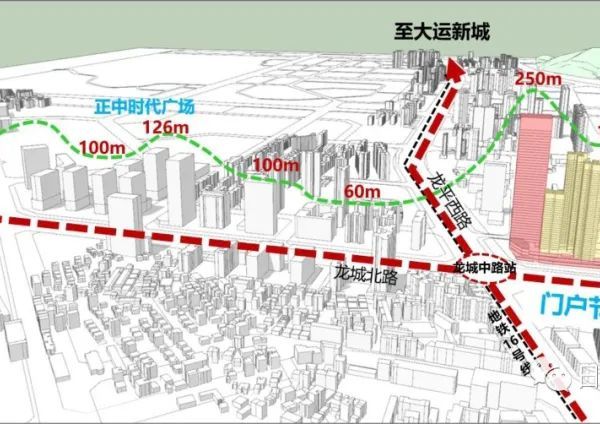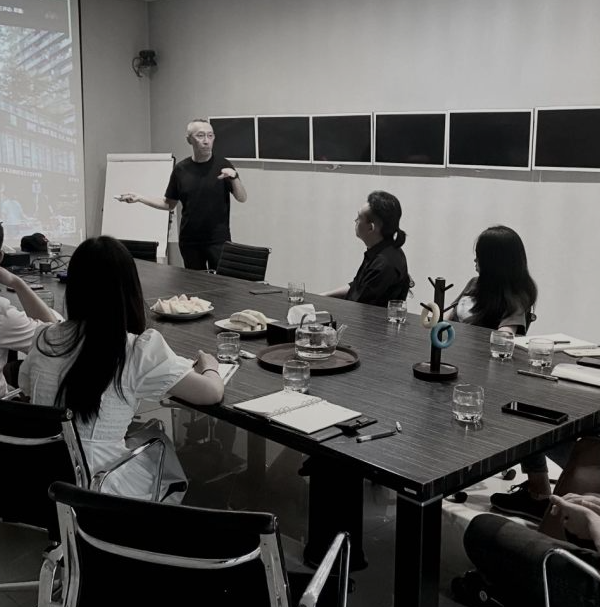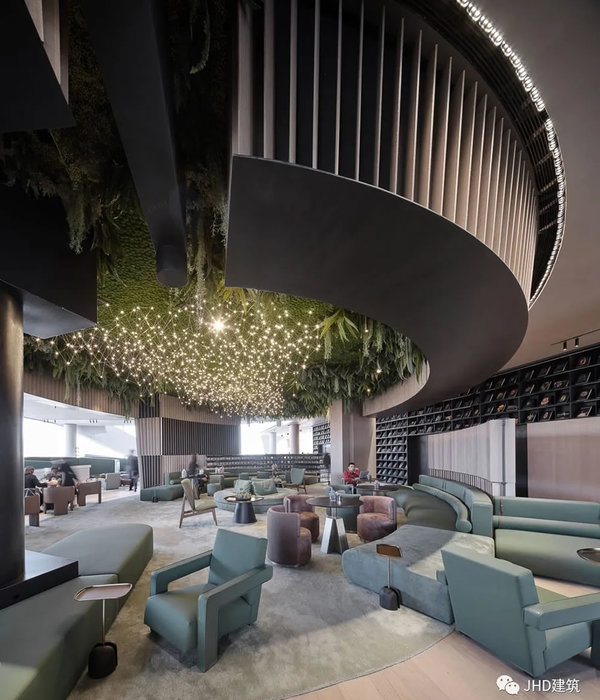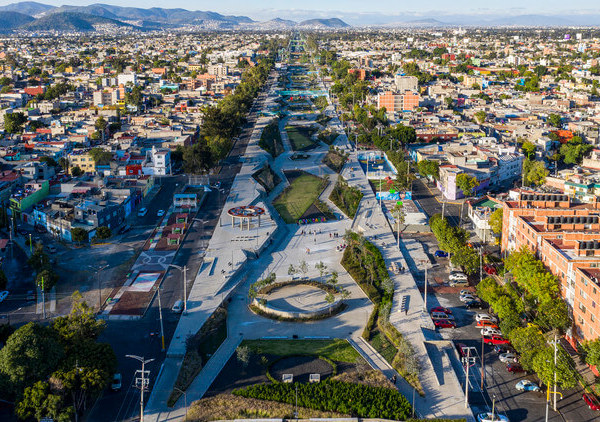阿维拉市政会议及展览中心——花岗岩与城市空间的巧妙融合
非常感谢
Francisco Mangado
。
Appreciation towards
Francisco Mangado
for providing the following description:
阿维拉是一座非常密集的城市,周围被中世纪的城墙环绕着,也限制了它的发展。它的每一处街角,每一栋建筑和每一幅收纳于蜿蜒街道的框景都说明了这一点。然而,除了空间密集之外,阿维拉还有一个更直观的密集之处,与土壤本身的质量有关:矿物密实度。在绝佳的景观上点缀着花岗岩石头,并沿用于人造城墙中。阿维拉本身就是一颗身处荒芜之中的岩石。在如此高密度的背景之下,任何空间都被赋予了新的价值,或成为对照物,或成为分界线。在这种情况下,广场成为释放内部空间的工具,对外强调了与城墙的关系。城墙外的区域通常用于商业活动,掩盖了最初用于整合城墙内外空间的中空空间。随着时间的推移,这些依然清晰的区域不断调整着城市结构。城墙墙角的空地——曾经是河床,后来成为牲畜市场,也是新会议中心建造的地方,让我们对城市空间的调整有了新的方案。
Ávila is a dense and intense city. Surrounded by walls which have served to delimit and control its growth, every corner, every building and every framed view that derives from the sinuous tracing of its streets comes to highlight this perception. However, there is another density, a more intuitive one, which has to do with the quality of the land itself: a topographical, mineral compactness whose presence is revealed in a superb landscape sprinkled by granite stones which struggle to emerge and finally manage to do so in the artificial form of city walls. Ávila itself is a rock amid the harsh landscape surrounding it.
Within such thickset contexts, any clear space takes on an added value much related to the concept of contrast or of boundary. In such cases a square serves as a means to free up interior space, and externally, to articulate the relationship with the city walls. The area outside the walls, usually linked to commercial activity, belies the origin of these voids which organize the space between the city inside, and the city outside. These areas which have managed to remain clear have earned the power to structure the city in the course of the years. The presence of an open space at the foot of the walls – once a river bed and later a cattle market –, where the new Congress Center shall go up, allows to think of new systems to structure the urban space.

场地的一大特色是斜率较大和施工区域基础多为花岗岩,因此挖掘难度被增大。在项目设计期间,指导原则是概念密度、占地空间的广泛性和场地地形特征的充分利用。镶有花岗岩碎石的地形作为意向参考。
市政会议及展览中心目标是成为城墙边界一个能用于庆祝不同活动的集会场所。这一区域的水平标高与基地的最高点持平,因此这一大片内部空间不用挖掘就能容纳了所有必要的功能设施。这一点确保了新建筑不会因为规模大而比例不协调。由于新建筑临河,该多层级区域被调整到与场地最低处的多面体折叠部分相适合。然而,建筑仍然坐落在一个高台上,与对面的河流和河岸建立起了视觉关系。
The site is characterized by the deep slope and the subsoil, which at least in the designated construction area, is granitic, thereby making excavation difficult. During project design the guiding principles were conceptual density, generosity in the way of occupying space, and exploitation of the topographical features of the site. The landscape, studded with granite pieces, provided the references needed.
The Municipal Congress and Exhibition Center is aimed at becoming a meeting place to celebrate different kinds of events, a leveled area or plaza at the edge of the walls. The main level of this area is matched up with the highest point of the plot, so that its extension generates a large interior void that shall house, without excavation, the required functions. This ensures that the new constructions, in spite of the scale of the programs they serve, do not stand out disproportionately. As it nears the river, this leveled area adjusts with polyhedric folds to the lowest parts of the plot. However, the grounds where the building rests remain as a raised platform which allows to establish a visual relationship with the opposite bank and the river itself.
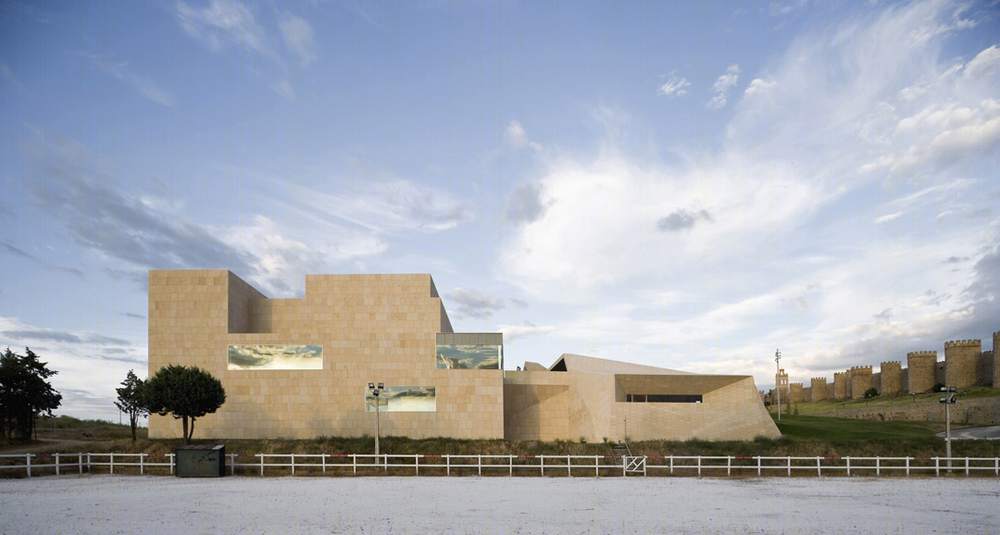
依照场地的轮廓,该建筑结合了两种不同的几何图形设计:正交直线型的空间包含了礼堂和主厅,最险峻和崎岖不平空间则是展览区。综合楼的入口清晰且容易找到:主礼堂可经由广场或从休息区的较高部分到达,从该休息区可以一览内部空间。展览区有单独的入口,位于东边分界线平台上的切口处。由于所有不同区域都在广场下连为一体,因此也可以经由内部区域到达。这几层楼的展览厅都成为了门厅区域的延伸部分。所有的公共入口集中在广场上,而服务区设置在北端,沿着原有的斜坡建设。
In accordance with the contours of the site, the project combines two different geometries: the most orthogonal and elongated space contains the auditoriums and main halls, while the most precipitous and uneven one contains the exhibition spaces. Entry to the complex is clear and easy: the main auditoriums are reached from the square and from the higher part of the seating area, which allows to get a quick grasp of the interior space; and the exhibition areas have an independent entrance from the incisions on the platform in the eastern boundary and, since all the different areas are connected under the square, they can also be reached from inside the building. The exhibition halls of these levels are set out as extensions of the foyer areas. All public accesses concentrate at the square, whereas the service areas are located in the northern end, where the slope of the terrain has been maintained.


从形态和构造的角度看,该项目的灵感来源于景观的感染力和遍布各处的花岗岩。放眼望去,或者站在城墙上往下看,建筑呈现立体而非平面状态,如同一座从地形中雕刻出来的雕塑。因此,屋顶的垂直面必须设计的平滑。正交直线型的建筑是精雕细琢出来的,而包含展览区的那栋更棱角分明的建筑则是通过广场地基的倾斜建造而成,并延伸出来与周围的景观融为一体。这些褶皱产生的切口可以让自然光进入内部,也保证了该区域的独立通道。表面没有使用惯常的薄花岗岩,而特意采用了厚花岗岩石。
From a formal and constructional point of view, the project draws inspiration from the evocative strength of the landscape, from the granitic mass which pervades everything. Seen from afar, and high up on the walls, the building should reveal no planes, but rather leave a volumetric imprint, as a sculpture carved out of the terrain. For this reason the roofs shall be designed to smoothly extend the vertical surfaces. The elongated, more orthogonal building is precisely sculpted; and the more abrupt piece which covers the exhibition areas is built by tilting the base of the square, and then spreads to meet the surrounding landscape. These folds generate the incisions through which natural light floods the interior, also allowing independent access to this area. Instead of thin cladding, thick granite pieces shall be used.
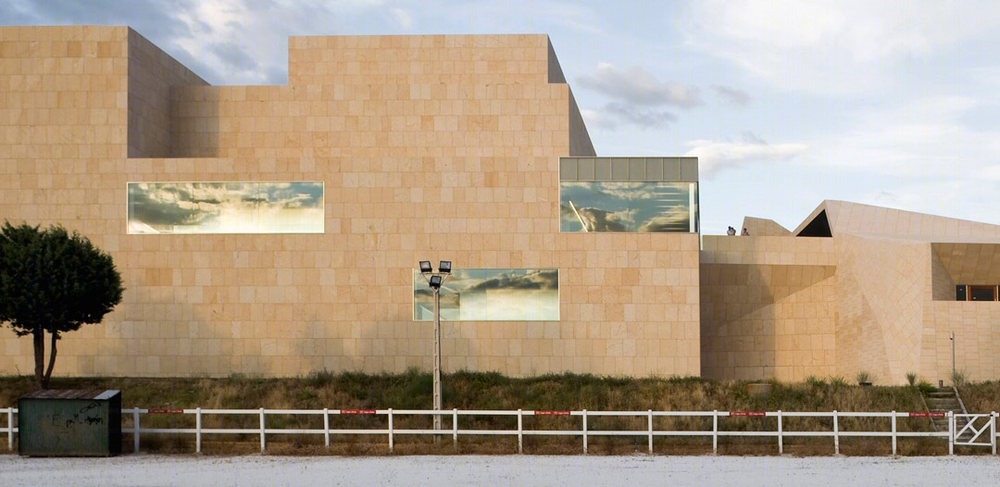
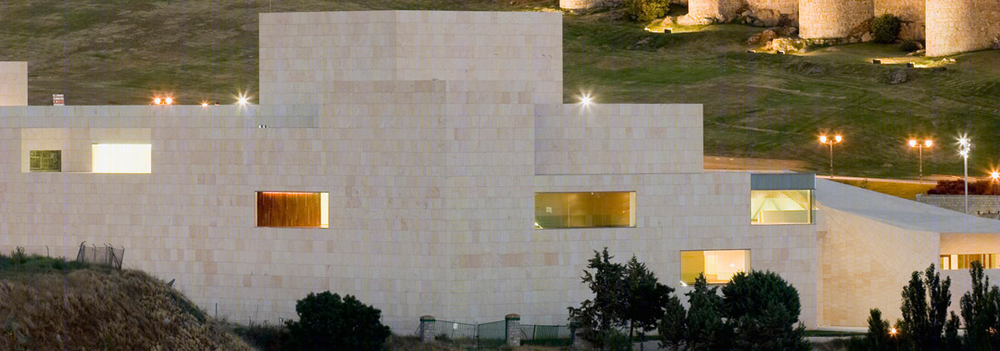
为了与外观协调,内部大厅将采用玻璃纤维夹胶玻璃进行覆盖,生成紧密矿物般而非单纯玻璃那样的透明感。
In keeping with the exterior treatment of the pieces, the interior halls will be clad in laminated glass with a fiberglass infill, generating a dense and mineral – rather than transparent – appearance.
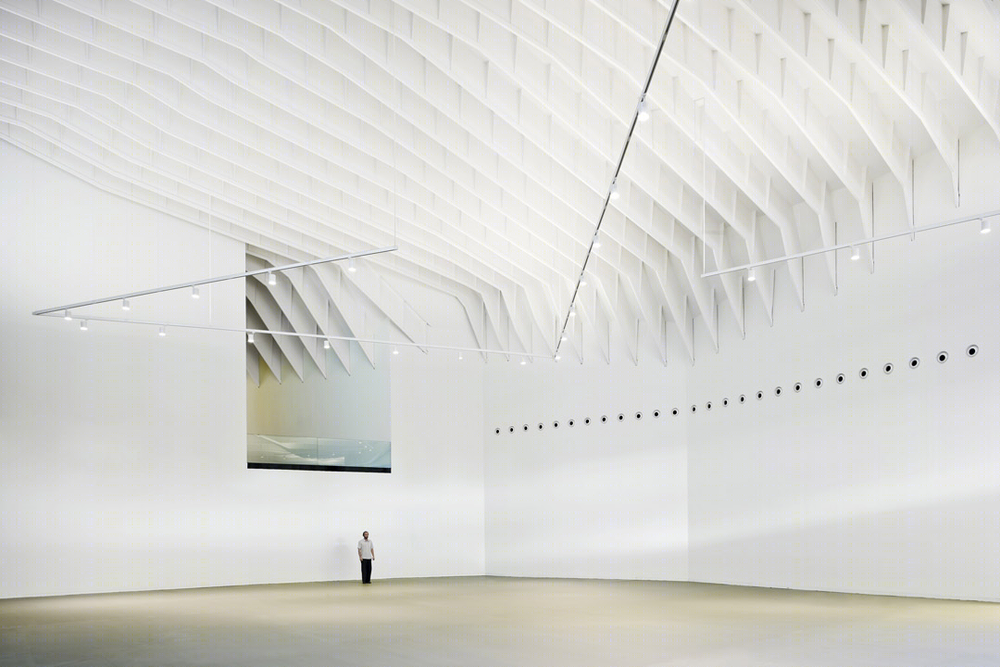
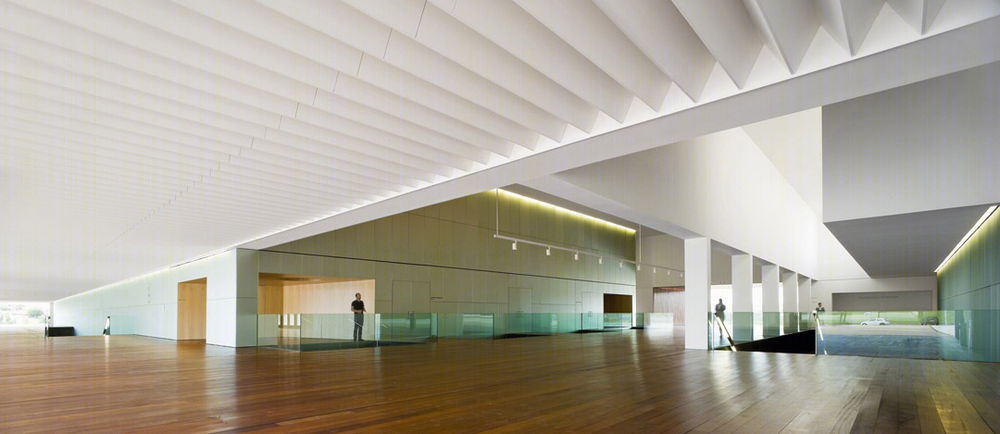
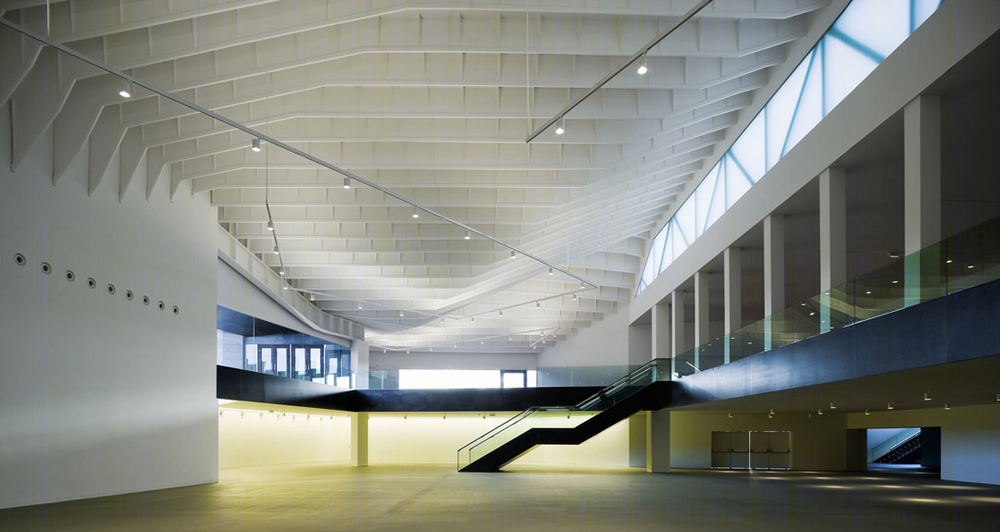

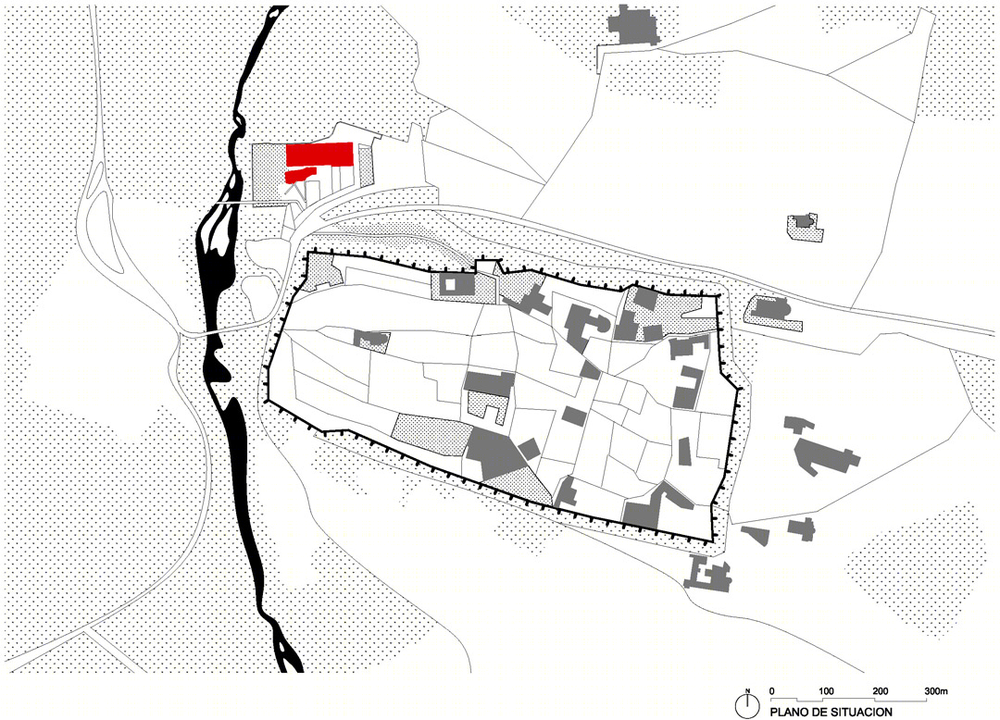
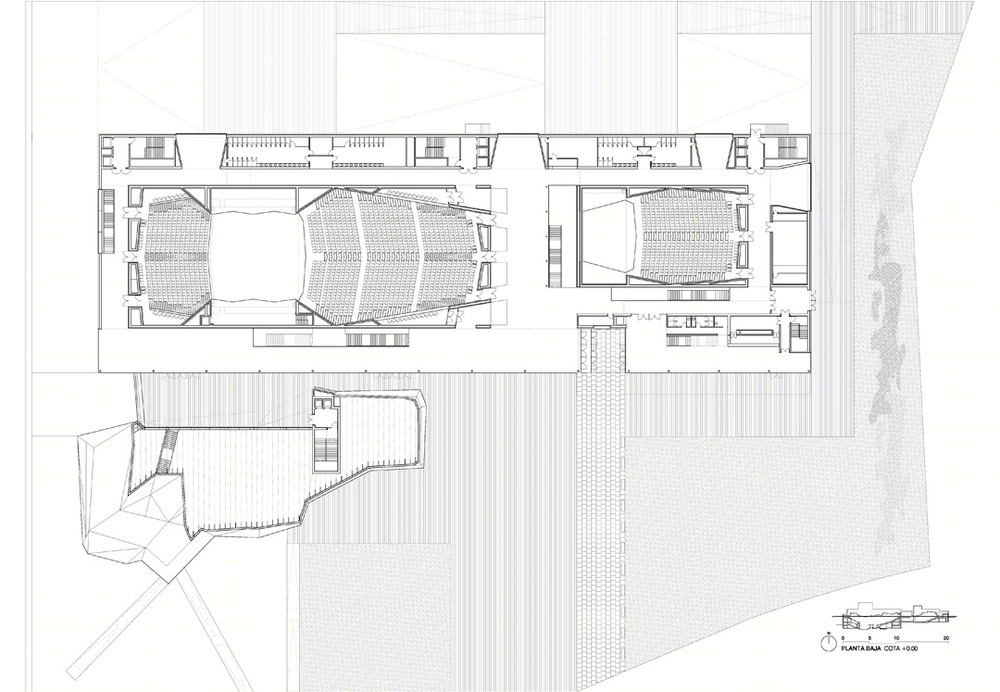
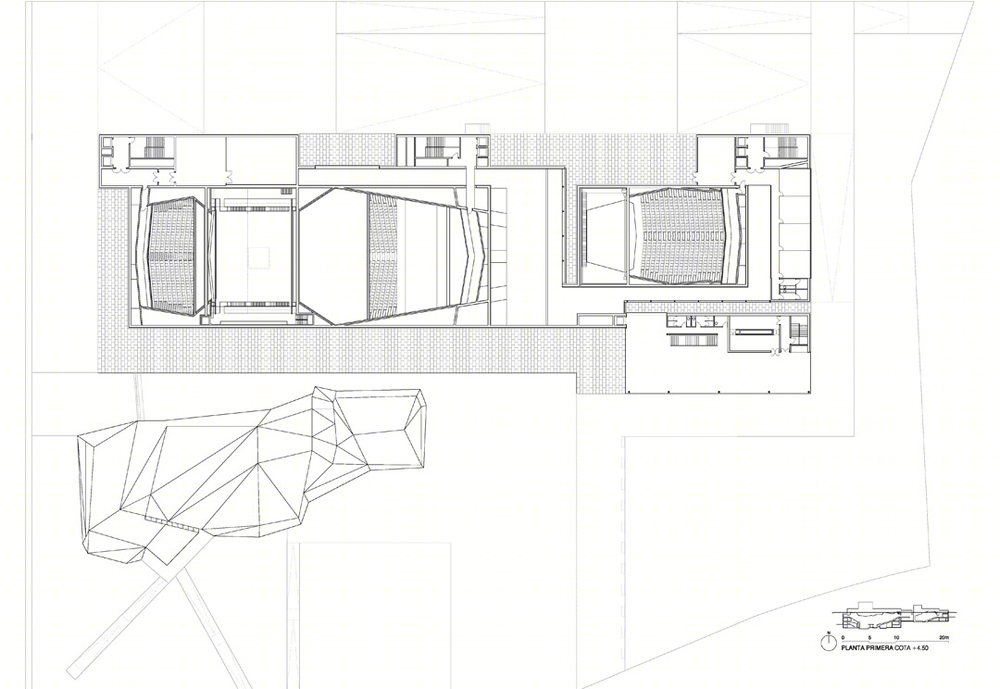


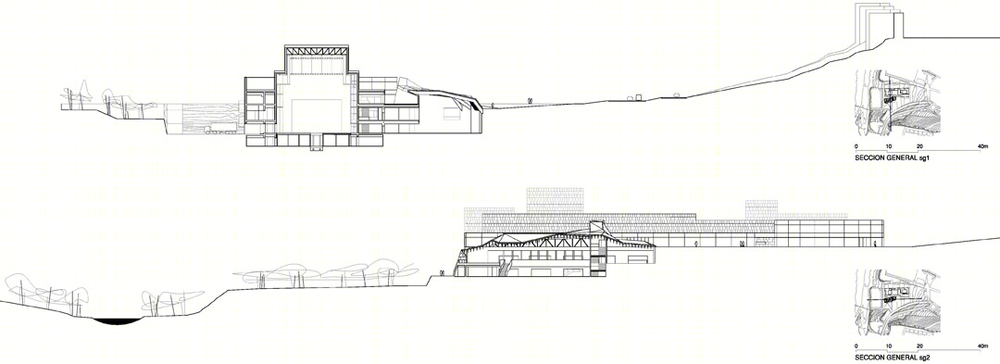
site
Av. Madrid 102, 05001, Ávila, Spain.
total area
18.944 m2 (Centre) 23.157m2 (Urbanization).
total cost
36.000.000 €.
year of contest
2002. First Prize Design Competition.
year of project
2003-2004
year of construction
2005-2009
client
Avila Town Hall-Junta de Castilla y León.
architect
Francisco Mangado.
work direction
Francisco Mangado.
collaborators:
architecture Jose Gastaldo, Francesca Fiorelli, Daniel Padrón Hernández, Daniel Marchelli, Ana Gabriela Salvador, Arina Keysers, Anjte Konrad.
structural engineering NB 35 SL (Jesús Jiménez Cañas / Alberto López) Ingenieros.
installations engineering Grupo JG Asociados (Enrique Monreal / Víctor González) Ingenieros.
acoustic engineering Higini Arau Estudi Acustic.
lighting ALS Lighting arquitectos consultores de iluminación (Antón Amann).
quantity surveyors Angel García. PA Aparejadores (Luis Pahissa / Fernando Pahissa).
contractor Volconsa SA.
awards FAD Awards 2010. Architecture Category. 2010. Selected proyect.
Mies Van der Rohe Award 2011. 2011. Selected project.
11th Spanish Biennial of Architecture and Urban Planning. 2011.Project Selected.
The International Architecture Award 2011.Given by the Chicago Athenaeum (Museum of Architecture and Design) and the
European Center for Architecture Art Design and Urban Studies. 2011.
AIT Award 2012. Selection. Category: Office, Administration 2012
Pedro Pegenaute




